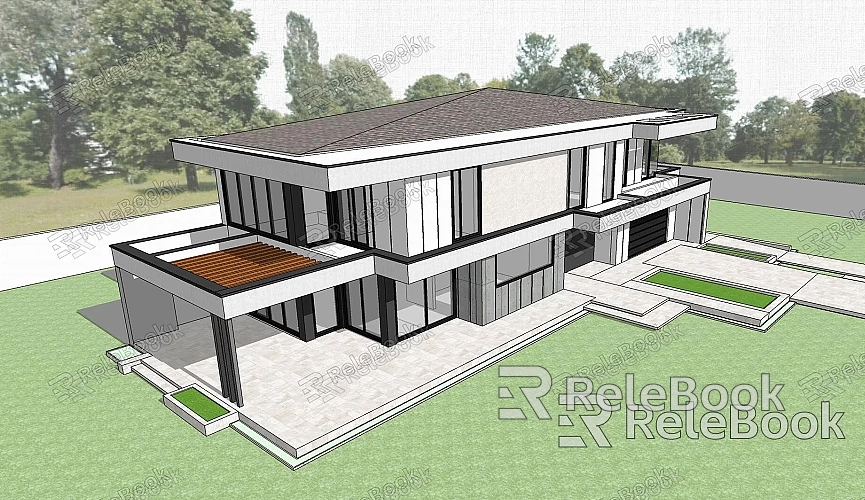How to Find Large Models in SketchUp
Finding large models in SketchUp is an important skill, especially for professionals involved in architectural design, urban planning, or interior decoration. This not only helps improve work efficiency but also ensures the quality and visual appeal of designs. This article will explore various methods to help users effectively locate and use large models, enhancing the completion of design projects.
Understanding the Definition of Large Models
Before diving into specific methods for finding large models, it’s essential to clarify what constitutes a large model. Large models typically refer to three-dimensional objects that occupy significant space or contain complex details. These models often play a crucial role in design and may include buildings, bridges, landscaping, or even city-level projects. Therefore, when searching for these models, attention to detail and quality is paramount.

Utilizing the Search Function in 3D Warehouse
The 3D Warehouse is one of the most frequently used resource platforms for SketchUp users, featuring a vast collection of user-uploaded models. By entering relevant keywords in the search box, such as "skyscraper," "park," or "museum," users can quickly filter for large models. The 3D Warehouse supports various search options, allowing users to sort models by update date, popularity, and more, making the search for suitable large models more efficient.
Using Categories and Tags
In the 3D Warehouse, models are often categorized by type, such as architecture, transportation, furniture, and more. By browsing these categories, users can find large models specific to their field. Additionally, the use of tags is essential; many models come with relevant tags, such as "landscape design" or "urban architecture," added during the upload process. Searching with these tags can help you quickly locate models that meet your needs.
Integrating External Resources
In addition to the 3D Warehouse, there are many other resources available on the internet for finding large SketchUp models. Websites like TurboSquid, CGTrader, and Free3D offer a plethora of 3D models, some of which are free while others require payment. By using keywords for searching on these sites and applying filtering options, users can find high-quality large models suitable for their projects. Especially in specialized fields, these external resources may offer more detailed and professional model options.
The Value of Community and Forums
Joining SketchUp-related communities and forums is an effective way to find large models. On these platforms, users can share experiences, exchange resources, and even seek help from others. Many experienced designers are willing to share their models or provide advice on resource searching. By participating in these discussions, you can not only obtain the models you need but also expand your social network and build connections with other designers.

Advantages of Custom Modeling
If suitable models cannot be found among existing resources, custom design is also a viable option. SketchUp offers powerful modeling tools, allowing users to start with simple geometric shapes and gradually add details and complexity. Through online tutorials and learning resources, users can improve their modeling skills and create models tailored to their needs. This approach not only addresses resource shortages but also allows for more personalized designs.
Tips for Organizing and Managing Models
When working with large models, effective organization and management can significantly enhance work efficiency. By utilizing SketchUp’s layers and groups, users can break complex models into more manageable parts. Grouping related elements allows users to quickly find specific model parts when needed. The layer manager helps users better understand the overall structure of the model, facilitating a smoother workflow.
Considering Model Quality and Compatibility
When searching for large models, the quality and compatibility of the models are factors that should not be overlooked. Some models, while large in size, may lack detail, potentially affecting the overall design quality. Therefore, it’s important to focus on the quality of detail when selecting models, ensuring they meet the visual and technical requirements of the project. Additionally, checking the file format of the models is essential to ensure they integrate seamlessly with SketchUp, avoiding compatibility issues down the line.
Finding large models in SketchUp is not a daunting task. By utilizing the search function in the 3D Warehouse, browsing categories, integrating external resources, and leveraging community support, users can efficiently acquire the models they need. Furthermore, by custom modeling and effectively managing models, users can fully unleash their creativity in their projects. We hope the methods outlined above will help you find and use large SketchUp models more smoothly, ultimately improving the quality of your design work. As your skills improve and your resources accumulate, your design projects will become even more outstanding and professional.

